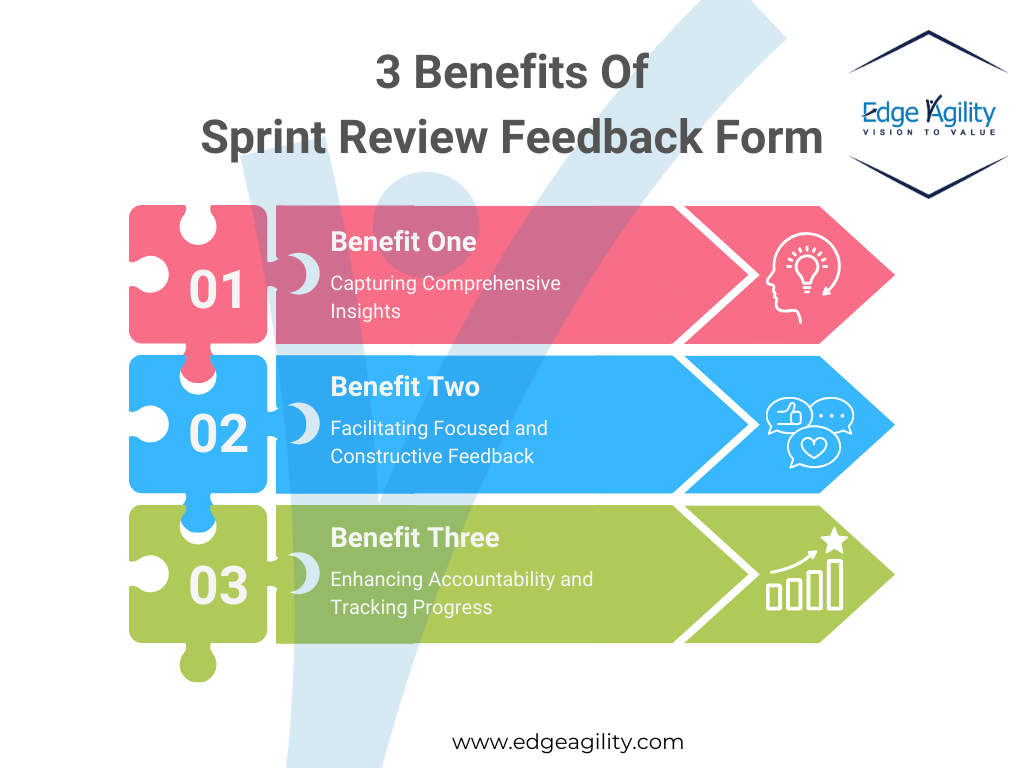In the bustling world of Scrum, the Sprint Review stands as a pivotal event. It’s not just a meeting; it’s a ritual that marks the culmination of weeks of hard work, collaboration, and innovation. But the true linchpin of this process? The stakeholder feedback. Yes, feedback—the golden nuggets of insight that guide teams toward continuous improvement and ultimate success.
Importance Of Feedback in Sprint Reviews
Illuminating the Path Forward
Feedback in Sprint Reviews acts as a lighthouse, guiding the product development ship through the murky waters of uncertainty and change. It illuminates the successes and shortcomings of the sprint, offering a clear direction for the next leg of the journey. This is not just about patting ourselves on the back or pointing fingers; it’s about understanding where we are on our map and deciding where to sail next.
Strengthening Stakeholder Relationships
Sprint Reviews are unique in that they bring together the crew and the passengers (Scrum Team and stakeholders, in less metaphorical terms) to discuss the voyage so far. Feedback during these reviews strengthens relationships by building trust and ensuring that everyone’s expectations are aligned with the product’s trajectory. It’s a check-in that says, “Are we on the right course?”
Fostering a Culture of Continuous Improvement
The heart of Agile beats to the rhythm of continuous improvement, and feedback is the pulse that keeps it alive. By openly discussing what worked, what didn’t, and how to adapt, teams cultivate a culture where growth is not just encouraged—it’s expected.

Challenges of Effective Sprint Review Feedback
1. One of the most significant hurdles is creating an environment where team members and stakeholders feel comfortable sharing their true thoughts and feelings. The fear of conflict, hurt feelings, or undermining authority can stifle honest feedback.
2. Sometimes, too much feedback can be as paralyzing as too little. When bombarded with suggestions, criticisms, and ideas, it can be challenging to discern which pieces of feedback are actionable and which are not immediately relevant.
3. Receiving feedback is one thing; acting on it is another. Sometimes, feedback can be vague, making it difficult to translate into specific, actionable steps.
4. Stakeholders might have grand visions for the product, while the team faces the reality of time constraints and technical limitations. Balancing these can be tricky.
Harnessing the Power of Sprint Review Feedback Forms
However, obtaining true feedback can be a daunting task. But there’s a secret weapon that can amplify the impact of these reviews: the Sprint Review Feedback Form. This tool, seemingly simple, can be a game-changer in maximising the effectiveness of Sprint Reviews.

Key Benefits Of Using Sprint Review Feedback Forms
Capturing Comprehensive Insights
The Sprint Review Feedback Form serves as a structured conduit for gathering comprehensive insights from all participants—team members, stakeholders, and product owners alike. Unlike verbal feedback, which can sometimes be forgotten or overlooked, written feedback ensures that every voice is heard and every opinion is recorded. This inclusivity leads to a richer, more diverse set of perspectives, enhancing the decision-making process for future sprints.
Facilitating Focused and Constructive Feedback
One of the form’s greatest strengths is its ability to guide respondents in providing focused and constructive feedback. By asking specific questions about the sprint’s goals, outcomes, and roadmap, the form encourages participants to reflect deeply and offer meaningful insights. This structured approach helps avoid the common pitfall of vague feedback, making it easier for teams to identify actionable improvements.
Enhancing Accountability and Tracking Progress
Feedback forms make it possible to track responses over time, providing a historical record of challenges faced and improvements made. This documentation is invaluable for assessing long-term progress and ensuring that recurring issues are addressed. Moreover, by assigning action items based on feedback and reviewing them in subsequent sprints, teams can enhance accountability and follow-through.

Overcoming Challenges with Sprint Review Feedback Forms
While the benefits are clear, effectively integrating feedback forms into the sprint review process can present challenges. Here are some strategies to maximise their effectiveness:
Ensuring Anonymity and Safety
To elicit honest and constructive feedback, it’s crucial to create an environment where participants feel safe to share their thoughts without fear of repercussions. Anonymity can be a powerful tool in achieving this, encouraging more open and candid responses.
Crafting Well-Designed Questions
The quality of feedback is directly influenced by the quality of the questions asked. Designing clear, concise, and relevant questions is essential for gathering useful insights. Avoid leading or loaded questions that could bias responses, and instead focus on open-ended questions that encourage detailed feedback.
Analyzing and Acting on Feedback
Collecting feedback is only the first step; the true value comes from analysis and action. Dedicate time during retrospectives or refinement to review feedback, identify trends, and decide on action items. This shows the stakeholders that their input is valued and ensures that feedback leads to tangible improvements.
In Conclusion
The Sprint Review Feedback Form is more than just a document; it’s a strategic tool that captures diverse insights, encourages constructive feedback, and facilitates continuous improvement. As with any tool, its success lies in how it is used. Embrace it thoughtfully, and watch as it transforms your sprint reviews from routine meetings into powerful engines of growth and innovation.

